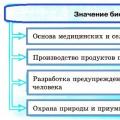Alfred Korzybski, "Science and Mental Health." Basics
Let's look at a classic example. Wave-particle duality. How can an object be both a wave and a particle? Or, to put it another way, how can an object be both local and non-local at the same time?
Obviously, in much the same way that a moving image on your laptop screen actually consists of still frames. And movement is just an illusion in your brain. Moreover, the image itself consists of tiny indivisible particles called pixels.
Let's write a program in Matlab for a circular wave on the surface of water from a thrown stone. Let's draw 100 floats around the place where the stone fell, evenly placing them around the circumference. We throw a stone. A circular wave began. And what do we see?
The wave reached the floats, but only one of them swung. Yeah, only one out of 100. And the wave itself disappeared. Yeah, she gave all her energy to this float and... collapsed. The wave function collapsed. It is also a reduction of the wave function. This is exactly how a photon behaves. Yeah, in our reality.
Let's display this program on 1000 screens. Maybe then we will be able to see other oscillating floats? And exactly, on about every 10 screens out of 1000, each of the 100 floats will oscillate. But, again, there will only be one oscillating float on each screen.
Thus, we have just seen that the photon also behaves like a classical circular wave that vibrates all the floats. Why do we see only one screen, and can only guess about the others? And, moreover, why do we all see the same screen?
Let's leave these questions unanswered for now. No, no, there is nothing complicated there. And it is unlikely that there is anything in the observable region of the Universe that could be difficult for quantum theoretical physicists. Now let's focus on something else.
Is it possible to describe this object with the words of language? Can. You just need to understand that any description will be only a projection of this object. Projection onto what? Yes to anything. For example, on a particular person’s ideas about the world. Thus, the more descriptions there are, good and different, the better we can imagine this object.
Moreover, these descriptions will often be mutually exclusive. Does this violate classical logic? Certainly. And this is one of the main conclusions. All categorical statements and statements are true only if certain conditions are met.
My students often ask me:
Mordechai Izrailevich, could you explain the structure of our world, for example, to Pushkin?
Eh-heh-heh, my dears, I usually answer. Do you know that in the time of Alexander Sergeevich there were no MacBooks or iPhones? And how happy are you that you live in our time! Otherwise, how could I, an old Jew, manage to explain to you the basics of multiversology?
Yes, the presence of computers in our world is truly happiness and the Providence of the Lord! After all, here the analogy between the device of a computer and the device of the Multiverse naturally suggests itself. So let us rejoice, brothers, and lift up our prayers to God! Amen.)
In Russian there is the so-called. "Book II" of his seminal work "Science and Mental Health". The translation was made by Oleg Matveev - the first and so far the only translator of Korzhibsky's works into Russian. Book II sets out the basics of general semantics, it is freely available and can be downloaded here.
short biography
ALFRED KORZIBSKI belonged to an old Polish family, which over many generations raised many mathematicians, engineers, scientists, etc. Born in Warsaw in 1879, trained as an engineer, during the First World War he was seconded to the intelligence department of the General Staff of the Second Russian Army. Later he served in various military posts in Russia and Canada. After the publication of the book, Manhood of Humanity remained in the United States and developed a methodology by which his new time-binding theory could be put into practice. These studies culminated in the book Science and Sanity (1933). He became the founder and director of the Institute of General Semantics, founded in 1938 as a center for teaching his works, and continued to lecture and write books until his death in 1950.
Korzybski's research has had a significant influence on the development of Gestalt therapy, rational emotive behavior therapy (REBT) and neurolinguistic programming (NLP).
The map is not the territory
Korzybski's most famous and famous quote is "The map is not the territory." But few people know that this quote is incomplete, the full quote is:
"A map is not a territory, a model of the world is not the world itself, but good map STRUCTURALLY similar to the territory, and this is its benefit"
The first thing many people don't understand is what is meant by territory and by map. In everyday life, territory usually means the world, reality, and by map we mean our perception of this reality. This is very important point that a map is not a territory, it is a model of the world. There is a certain world, a universe, and there is its model, a map. The model and the world are fundamentally different. Moreover, let us have two people, then one person will have model 1, and the other will have model 2, and neither of these models is a complete description of the structure of the world and these models also differ from each other.
We can only add that very few psychologists REALIZE the simple fact: NO psychological theory does not describe the WORLD, it always describes only the way of thinking of the author of this theory.
R.A. Wilson on Korzybski's general semantics
General Semantics, the product of the Polish-American engineer Alfred Korzybski, attempted to formulate a new non-Aristotelian logic to remove the "essentialist", or Aristotelian, rules of the game from our neurolinguistic responses (speech and thinking) and rewire our brain programs to existentialist and phenomenological concepts and especially to quantum mechanics. A-prim (English without the word is), created by D. David Borland Jr., attempts to effectively apply the principles of general semantics in practice. I owe a lot to Korzybski and Borland.
* IN English language is is a linking verb, corresponds to the Russian words there, is, is.
General semantics has had a major influence on modern psychology and sociology, but has had little impact on physics and education, and has had virtually no impact on the problems it was trying to solve—that is, the ubiquity of unconscious ignorance and bias in people's assessments.
People have been killing each other for centuries in brutal wars and revolutions and continue to do so - and all this in the name of ideologies and religions, which, if they are presented in the form of propositions, appear neither true nor false to modern logic. These are meaningless sentences that can only seem meaningful to a linguistically illiterate person.
As Alfred Korzybski observed in the 1930s, if all people learned to think in the non-Aristotelian manner inherent in quantum mechanics, the world would change so radically that most of what we call "stupidity" and even much of what we call “madness” would disappear, and the “insoluble” problems of war, poverty and injustice would suddenly seem much closer to resolution.
Korzybski and processing
Here's what was said about it on the forum:
 For me, the most general philosophy of approach to processing is Alfred Korzybski's General Semantics. There is even a section on this forum dedicated to this work. I even translated one of his books into Russian. Unfortunately, he wrote in the 20-30s of the last century in extremely heavy scientific language, and, despite all my admiration and all the efforts to present his text as clearly as possible (without compromising the original meaning), it did not turn out to be particularly easy to read.
For me, the most general philosophy of approach to processing is Alfred Korzybski's General Semantics. There is even a section on this forum dedicated to this work. I even translated one of his books into Russian. Unfortunately, he wrote in the 20-30s of the last century in extremely heavy scientific language, and, despite all my admiration and all the efforts to present his text as clearly as possible (without compromising the original meaning), it did not turn out to be particularly easy to read.
Oleg Matveev
There is a great temptation to say that the world is structured this way and in no other way (I see this with my own eyes!), thereby imposing your own model of the world, your way of thinking, your worldview.
Aristotle once wrote that a spider has 6 legs, and in the Middle Ages, if you had blurted out that it had 8 (and this is obvious, you can take it and observe), you would have had big problems. There was also a model that the Sun revolved around the Earth, and this model was equal to the world. The world works this way, there is no point in arguing with it, that’s what the church says. And if you suddenly started using your own observations, i.e. build your own model, which, God forbid, differed from the generally accepted one, then you had very big problems.
If you talk to a person for a long time about Freud's dreams, then he will begin to dream about them - this is the imposition of a ready-made model.
In processing, the leader in no way imposes his model of the world on the follower. On the contrary, he creates all the conditions for the slave to consider his model, so that he himself understands what needs to be changed in his model in order to get the desired result.
Alfred Korzybski - Science and Mental Health (Book 2)
GENERAL INTRODUCTION TO NON-ARISTOTLEAN SYSTEMS AND GENERAL SEMANTICS
Book II, Chapter XXIV
Russian translation © 2007, Oleg Matveev
Aristotle is unique in that his followers worshiped not only his best qualities but also his shortcomings, something he never did to anyone, living or dead; This is what he was reproached for more than once - for non-worship. (354) AUGUSTUS DE MORGAN 1
There is one very important fact about which one cannot have the slightest doubt, and it is that none of the existing deductive theories has just one systems of fundamental concepts and just one systems of fundamental premises; Usually there are several equally possible systems, that is, systems from which all theorems can be correctly deduced with equal probability. . . . This fact is very important, since it shows that they themselves do not exist undetectable concepts nor non-demonstrable preconditions; they are such only relative to a certain accepted order, and cease (at least in part) to be such if another order is adopted. It destroys the traditional concept fundamental ideas And fundamental truths, fundamental in the absolute and essential sense of the term. (120) LOUIS COUTURAT
In this direction we do not strive for finality, because it is obviously unattainable. All we can say is to quote one leading analyst: “this accuracy is sufficient for the current moment.” (23) E.T. BELL
In mathematics, it is new ways of looking at old subjects that seem to be the most abundant sources of promising discoveries. (23) E.T. BELL
The first will show us that a change in language is sufficient to reveal generalizations that hitherto remained above suspicion. (417) H. POINCARÉ
Eventually all that a scientist actually creates is the language with which he proclaims it. (417) H. POINCARÉ
This long discussion leads us to the final conclusion that concrete facts of nature are events which exhibit a definite structure in their mutual relations and their own definite character. The task of science is to express these relations between their character in terms of the reciprocal structural relations between the events so characterized. (573) A.N. WHITEHEAD
We stop looking for similarities; and devote ourselves first to the differences, and among these differences we first select those most emphasized, not only because they are the most obvious, but because they are found to be the most instructive. (417) H. POINCARÉ
The materialistic theory has all the completeness of medieval thinking, which had a complete answer to everything, whether in heaven, hell or nature. And it is very elegant - with its instant present, its disappeared past, its non-existent future and its inert matter. This elegance is very medieval, and little corresponds to the brutal facts. (573) A.N. WHITEHEAD
The presence of analogies between the main features various theories implies the existence general theory, which underlies particular theories and unites them in relation to these basic features.* E.H. MOORE
* Introduction to the General Analysis form. Yale University Press
The mere authority of man or the mere authority of fact is not sufficient in itself. The universe as we know it is a joint manifestation of the observer and the observed; and every process of discovery in natural science or other branches of human knowledge takes its best form when it is in accordance with this fundamental principle. (82) R. D. CARMICHAEL
It is obvious that if we accept this view of concepts, namely, that a concept is properly defined not in terms of its properties but in terms of actual actions, then we do not have to contend with the danger of having to revise our judgments about nature. (55) P.W. BRIDGMAN
The claim that facts are unknowable is an excuse for one's personal ignorance. Ignorance, however, may not be a vice. It becomes one only when the individual allows himself to begin to justify it, that is mask it, which results in blocking his ability to use reason, which otherwise might well be able to solve the problem assigned to him. (241) SMITH ELY JELLIFFE
Symbol A does not correspond to anything that would be familiar to us in ordinary life. Letter for child A would seem terribly abstract; so we work with her to give him some familiar concept. " A “This is a Watermelon, striped on the outside and red on the inside.” This overcomes the difficulty which immediately arises for him; but he will not be able to continue serious progress if Watermelons, Bananas and Wolves are jumping and spinning around his letters. Letters are abstract, and sooner or later he must realize this. In physics, we have already grown beyond the watermelon-banana definitions of fundamental symbols. And in response to the question of what an electron actually is, we can only answer: “It’s part of the ABCs of physics.” (149) A.S. EDDINGTON
No pre-existing system of thought has produced a properly working hypothesis to explain why a person needs to “climb three steps or be constipated,” “or take three pills at a time,” or other similar symptoms , which will arise in the reader, and which are found in amazing abundance in all pathological cases, be it hysteria, obsessive neurosis, phobia, schizophrenia or something else like that. (241) SMITH ELY JELLIFFE
Meanwhile Sonya. . . continued: “...which began with the letter P, like powder, steam, memory and empty - you know how they say that you pour from empty to empty... Have you ever seen how they pour from empty to empty?”
“Well, now you’re asking me,” said Alice, she was clearly in difficulty. - "I don't think..."
“If you can’t think, then you have nothing to say,” said the Hatter.
** LEWIS CARROLL
4.1212 What Can show, it is forbidden express. (590) L. WITTGENSTEIN
** Alice in Wonderland, (trans. Starilov).
PART VII ABOUT THE TIME BINDING MECHANISM
There should be no theoretical objections to the hypothesis about the formation of new physiological routes and new connections within the cerebral hemispheres. (394) I. P. PAVLOV
IN this place It seems desirable to make clear the fact that when using psychoanalysis we are working exclusively with the method of data collection. From time to time you can hear the opinion that psychoanalysis is nonsense. A method, or a tool, is not nonsense. (241) SMITH ELY JELLIFFE
The signaling activity of the hemispheres is constantly adjusted and improved through internal inhibition. (394) I. P. PAVLOV
We are dealing here with types of associative reaction specific to the cortical system, which are correctly contrasted with the unconditioned affective reactivity of the thalamus, a useful analysis of which was given by Head. (411) HENRI PIERON
This example and other observations suggest that the gradual development of internal inhibition in the cortex should be used to restore the equilibrium of normal conditions in cases of unbalanced nervous system. (394) I. P. PAVLOV
Self-righteous rationalism ends up becoming a type of anti-rationalism. It represents a random fixation of a specific set of abstractions. (575) A.N. WHITEHEAD
 "Composition, methods and role of biology
"Composition, methods and role of biology How to place commas correctly
How to place commas correctly Moses Solomonovich Uritsky: biography Education did not play a special role
Moses Solomonovich Uritsky: biography Education did not play a special role